
Gallery Photographers
Partner
Artists-in-Residence
Image City Feature Articles
Gary's Photographic Tips
Newsletter Archive
If you are unable to visit our gallery and would like to purchase photographs from this preview or others in the gallery, please contact the gallery and call 585-271-2540.
Peter Marr's Picks of the Show
The Eclectic Palette
January 25 - Feburary 19, 2012
Peter Marr has picked his favorite photos from the show by the guest photographers
and also describes the strength of the images he has chosen.
click here to return to the details of the exhibit
All images copyright by the individual photographers
Last Tree On Earth by Nicole Barrada Nicole’s electrifying and imaginative images are a great tribute to her creative talents and from her work in art and theater, together with her fertile imagination and her mastery of photo-manipulation skills through widespread experimentation. Hopefully, the viewer will project their own imagination onto her photographs to invoke feelings, and perhaps trigger something very profound. Although I admire all of the pieces that she has on display, I decided to comment further on “Last Tree on Earth” because this print elicited personal memories from my childhood, of devastation that I had seen and experienced from World War II. In the artist’s surrealistic landscape, I see an image of survival, of a city on the horizon that has been virtually annihilated, its smoking ruins displayed against a foreboding, sinister sky, a gray and black cataclysm of horror and destruction. One does not have to see or feel the pain and suffering that this tragic landscape portends for this observer, nor the fact that there may not be any silver lining in the near future. As one numbingly moves away from such a ghastly spectacle, I have to traverse an imaginary path through a hayfield, whose flattened sheaves are strewn haphazardly over the lifeless ground beneath. In doing this, I am distinctly aware of three human figures, isolated from each other in this large field. The two people in the background appear to be heading forward, but it is the person in the foreground, standing near a dead, dual-trunked tree, who commands my attention and curiosity. The stark white face of this fully clothed individual stands out in eerie contrast to the tall, lifeless tree, whose broken limbs are silhouetted against the dark clouds of smoke on the horizon. In retrospect, I do of course see tragedy and untold destruction, together with the distinct, possibility of the elimination of life as we now know it. Having said that, I also see a glimmer of hope for a future civilization, centered around the three survivors, with the possibility there are more yet to be found. Facing extreme sacrifice, anxiety and despair, but also with some belief and resolve, I am confident there will eventually be a successful outcome. Bathing in the Holy Ganges by Jim Patton I could have chosen any of Jim’s resplendent and insightful images from India, for they represent a superb, photographic portfolio of his many interactions with an astonishing cross-section of the wonderful people of this great nation. I was particularly impressed with two of his prints, namely, “Bashnoi Family” and “Desert Moon”, which are truly outstanding, but I thought I would comment further on the gathering on the bank of the Ganges, because it dramatically portrays a custom and way of life that is virtually unchanged over countless centuries, and it is a ritual that is very familiar to most western observers. The author has inspiringly captured the observance of bathing and washing in the Holy River Ganges. For the many who live close enough to the banks of this great river, it is a daily ritual, whilst for most others, it is reverence for a time-honored tradition and worship practice for whenever they can carry it out. Although this sacred waterway is heavily polluted, and contains varying amounts of human waste, this does not deter the faithful. Jim has recorded the very essence and atmosphere of this bathing tradition, in a spectacular, highly colorful panorama of intense activity. What is strikingly apparent is that everyone is going about their routines as they always have done, mindful of the people around them, but also being extremely tolerant of whether they are young or old, male or female, from different religions, or rich or poor. The range of saturated hues of the saris and other robes is amazing, as is the extreme diversity of the people themselves. The friendly and supportive atmosphere portrayed seems holy in itself, and I have great admiration for the artist who has lovingly seen and photographed this vibrant, historic scene, certainly an amazingly perceptive portrait of a cultural phenomenon. Blue Chair at Santa Fe by Harriet Sutherland Rain at Monte Carlo by Harriet Sutherland The gentle early evening rain at a romantic corner setting in a fabled city has been magically captured by Harriet in an impressionistic pastiche, worthy of the scapes of many of the famous French artists in the late 1800’s. The rain gracefully supplements the soft, distinctive lighting, giving a warm, intimate atmosphere and imaginative reflections, that elegantly complement the regal, period architecture of the buildings. This image is made even more memorable by the artist’s inspired use of a digital tone separation technique, and a superb color palette where the luminance contrast adds a mystical glow to this sublime locale. I love the way our eyes move through the photograph from the red fixture in the foreground (probably a mailbox), to the red umbrellas in the distance, and ultimately to the person with the white umbrella. There is an imbalance and tension that creates excitement and mystery, and one is intrigued to explore further as to what topic of conservation could be so important, that it needs to be discussed on the sidewalk in the pouring rain. Although one wants to go under the majestic arch to explore what is around the corner, there is a stronger desire to return to the stately tall window with the elegant red window frames. Here, a light beckons us seductively to explore within, the riches and beauty that we know must be hidden behind this elegant facade. This creative and especial image, offers us all a fascination and an inward desire to visit this corner of Europe, so that we can uncover for ourselves the hidden beauty that Harriet’s striking print has so enlightened us with. Denali, Alaska by Richard Welch Robert Treman State Park by Richard Welch For all of the many memorable years that I have known Richard, and admired his consummate artistic and photographic skills, I was always keenly aware of his innovativeness and technical expertise, particularly in the photographic area. He pioneered and mastered many procedures long before the advent of digital technology made them available to many of us less talented photographers. I was therefore not totally surprised to see in this outstanding “eclectic” exhibition, a truly innovative technique that he has introduced in some of his pictures that is really exciting. I refer of course to his images printed on semi-transparent media, backlit with a long-lasting LED illuminator. Although I equally admire his other backlit images, I chose the view from Robert Treman State Park because it has a vibrancy, glow and three-dimensionality that is simply amazing and inspiring. This classic view of the upper stream gently cascading over the smoothly- worn flat rocks of the upper gorge is just delightful, astonishing in its clarity and air of tranquility. Suddenly, as the sunlight majestically erupts through the picturesque setting, we experience an awesome backdrop of trees, clinging for life on the steep rock faces, just as the stream exits under a pedestrian bridge, and disappears from view by way of a thunderous waterfall. I should note that we are aware of the latter because of our familiarity with this area. The revelation that this LED backlighting gives through the unique print media, is that we can experience this glorious river journey as never before. From the foreground shelf on which nature has artistically scattered an imposing array of autumn leaves, leaves which glow in the afternoon sun, through the smooth eddys which glisten with soft pastel hues, through the tranquil pool which lovingly reflects the sumptuous yellow leaf structures, the river finally clears the precipice, and our eyes are left to admire the canyon walls in the far distance, fully conscious of the breathtaking scale of three-dimensionality that the backlighting has given us. Using this novel “illuminator” process has not only resulted in an imposing vista, superbly captured and presented, but it has given this observer a unique impression of how a striking scene can really come alive, with a grandeur and brilliance that is unsurpassed. 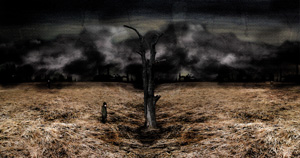

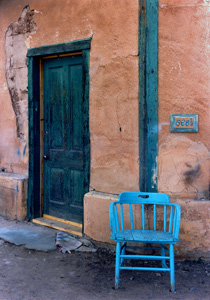
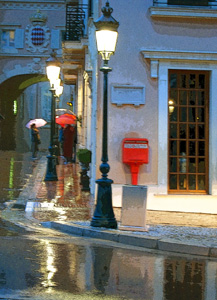
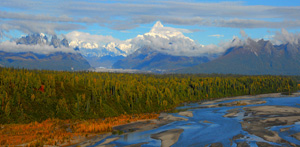
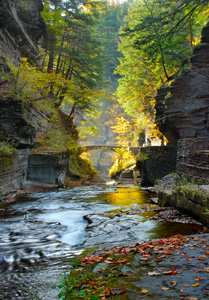

Peter MarrWe are very grateful to Peter for his thorough review and selection for Peter's Picks. Peter was born in England in 1935 and came to live in the United States in 1968. He worked for the Eastman Kodak Company for 34 years, retiring in 1998. During his employment and continuing into retirement, he has been an enthusiastic photographer. His photography has won him numerous awards throughout Kodak and in International Salons, including 5 George Eastman Medals, which is the top honor awarded to the most outstanding picture in the Annual Kodak International Salon. He has served as a judge in both local and international photographic competitions for the past 20 years, and is a Past president of the Kodak Camera Club and past chairman of many of the Kodak Camera Club organizations. In the past five years or so, he has devoted his photographic skills and interest into nature photography, notably bird photography. His bird photography has been the subject of several one-person exhibits, the most recent being at Ding Darling NWR, in Sanibel, Florida, The Roger Tory Peterson Institute in Jamestown, New York, and at the Webster Public Library in Webster, NY.
Image City Photography Gallery ♦ 722 University Avenue ♦ Rochester, NY 14607 ♦ 585.271.2540
In the heart of ARTWalk in the Neighborhood of the Arts